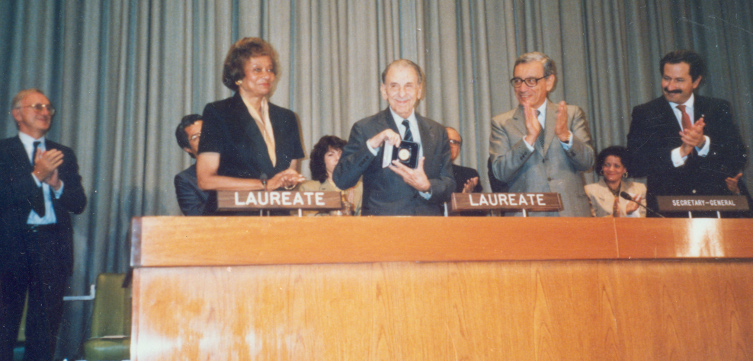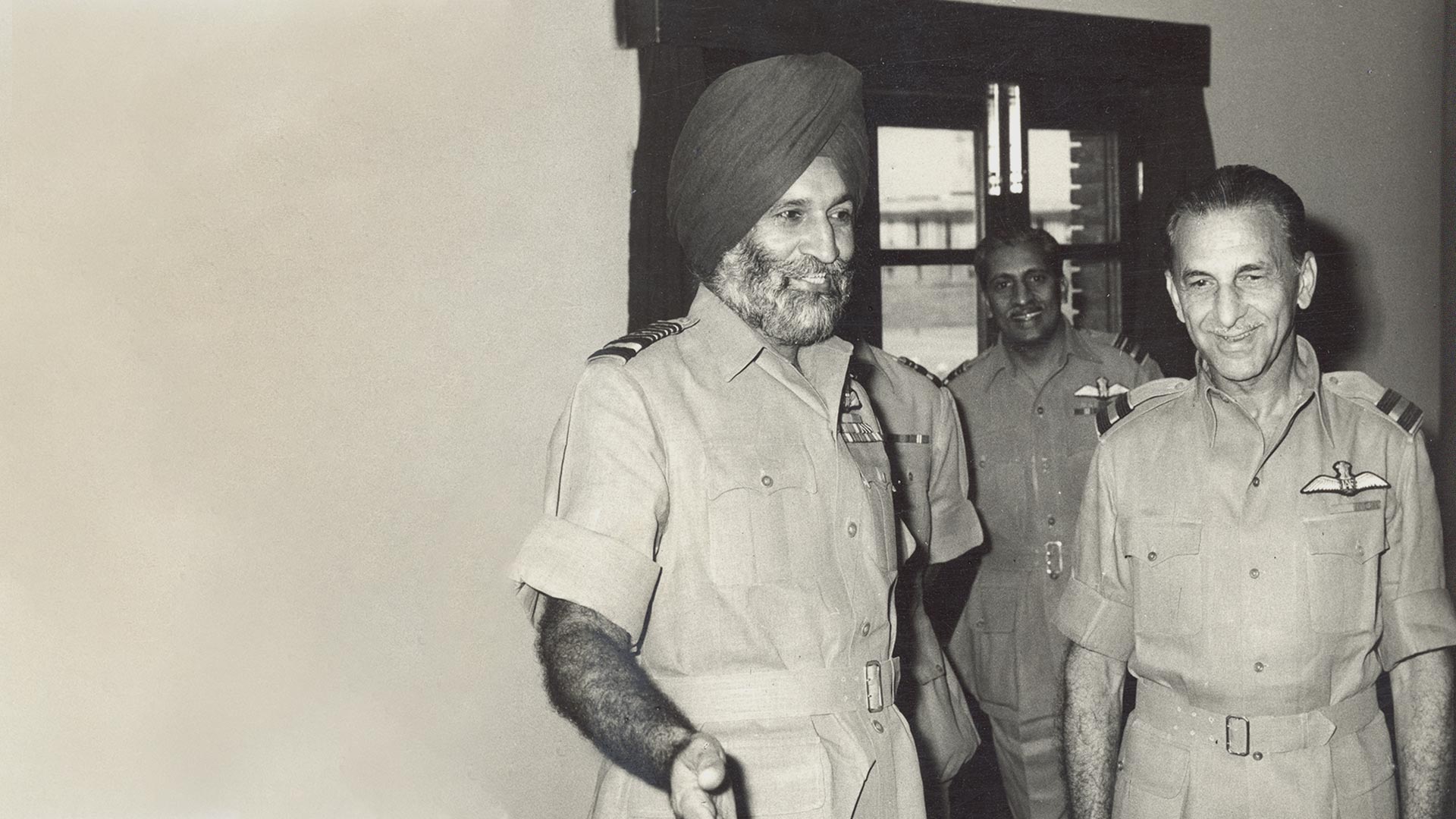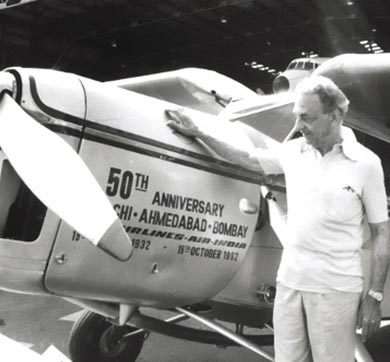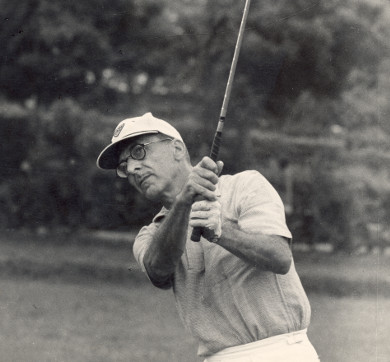July 2019 | 1254 words | 5-minute read
JRD’s contributions to the development of India go far beyond establishing and nurturing the country’s aviation industry, or guiding India’s leading business conglomerate for 50 years. In fact, it was clear that his destiny and India’s would be intertwined, as early as 1926.
Born in Paris in 1904, to Jamsetji Tata’s cousin RD Tata and his wife Sooni Tata, JRD loved France and flying more than anything else. He spoke French better than English, though he was educated in France, Japan and England, before being drafted into the French army for a mandatory one-year service period. He would have loved to extend his time with the armed forces, but was summoned back to India by RD Tata, a fact that caused him pain at the time.
Things changed soon after. After his father’s death in 1926, JRD, a French citizen, became more involved and integrated into the Indian scene and conditions and “realized that his place was in India”. In those days you were allowed dual nationality and his father had enjoyed both British-Indian and French nationalities. JRD, however, renounced his French citizenship in 1929 and decided to become an Indian citizen.

Population control initiatives
JRD was the first prominent Indian to espouse family planning. He noted that India’s population would double in 50 years (he wasn’t far off the mark – it doubled in 40).
Soon after independence, when JRD raised with Nehru the importance of curbing the population, Nehru said, “But Jeh, population is our strength!” Undeterred, JRD raised the subject again in 1951, at which time India’s population was just 361 million.
For 40 years, he pursued a campaign to promote family planning. He did this through the agency he founded, the Family Planning Association of India. In 1956, through the Dorabji Tata Trust — and in collaboration with the Sir Ratan Tata Trust, the UN and the Government of India — he established International Institute of Population Studies in Mumbai, to serve as a centre for teaching, training and research. For all his efforts, he received the UN Population Award in 1992.
The first HR department
One day when JRD was seriously ill in July 1943, he wrote from his sick bed a thoughtful 2,500-word note on human relations in Tata Steel:
“If we have 50,000 machines,” he noted, “we would undoubtedly have a special staff or a department to look after them… but when employing 30,000 human beings, each with a mind of his own, we seem to have assumed that they would look after themselves, and that there was no need for a separate organization to deal with human problems involved.”
He wanted the workers to have a say in their welfare and safety, and he wanted their suggestion on the running of the company. The note resulted in the founding of a personnel department; it was the first corporate HR department in India.
The Prime Minister’s National Relief Fund
As millions of refugees poured across the frontier post-partition, JRD suggested to Nehru in October 1947, that a national fund for relief and distress should be started in the name of the prime minister. He said that the Tatas would be glad to make a substantial grant to it.
Nehru agreed and created the Prime Minister’s National Relief Fund in January 1948. The trustees included a Tata representative, the Prime Minister and Deputy PM, the Finance Minister, the Chief Justice of India, the president of the Indian National Congress and a representative of industry.
The PM National Relief Fund still exists and is utilised primarily to render immediate relief to families of those killed in natural calamities and to the victims of major accidents and riots.
The Bombay Plan
Delivering the inaugural address at the JRD Tata Centenary celebration in New Delhi, then Prime Minister Dr Manmohan Singh referred to his contribution to the formulation of the 1944 Bombay Plan. He had played an exceedingly important role, along with GD Birla, Purshottamdas Thakurdas, Ardeshir Dalal, and John Mathai, in the formulation of this long-term plan for India's economic development after World War II.
“When we read it today, nearly 60 years later, we see how relevant many of the central propositions of the Bombay Plan remain," Dr Singh said.
The Bombay Plan, which envisaged the doubling of per capita income over 15 years, was initially released for private circulation, but it generated enough interest to be published as a pamphlet. Demand led to a number of reprints; the document was also translated into several languages.
Lord Wavell, the Viceroy of India, mentioned it as containing a useful and novel approach to the country’s economic problems, and Jeremy Raisman, the finance member, welcomed it. The FICCI (Federation of Indian Chambers of Commerce & Industry) also endorsed the plan.
Creating an opposition party
The Tata group’s association with the Congress goes back to the very first meeting of the Congress, which was attended by Jamsetji Tata, and the support continued throughout the party’s freedom struggle.
However, once India gained independence and became a democracy, JRD Tata recognised the need for not just a strong government, but also a strong opposition. In a letter dated August 16, 1964, he wrote to then Prime Minister Jawaharlal Nehru that in addition to the continued support to the Congress, he would also support the Swatantra Party.
To C Rajagopalachari, one of the founders of the Swatantra Party, JRD wrote that he would support them so that ‘India’s political life develops in a truly democratic way around two main opposing Parties, neither of which would be to the extreme Left or the extreme Right’.
Nehru responded to JRD within a couple of days, on August 18, 1964. He courteously explained his own reason for following the policies of the party and shared his belief that the new party would not be an effective opposition, but also added, “You are, of course, free to help in any way you like the Swatantra Party… All good wishes to you.”
The Indian Air Force
After the India-China War of 1962, India formed a committee, which included the three service chiefs, the defence secretary and JRD Tata, to come up with a 10-year road map on India’s preparedness, need for military aircraft, radar, signaling equipment.
Over two decades later, at an event to release Keynote, a book containing excerpts from the speeches and addresses of JRD Tata, Air Chief Marshal D A La Fontaine (then chief of Air Staff) delivered a speech in honour of JRD, sharing:
“In the year 1963… he was charged by the government of India with studying the requirements of the IAF and the requirements of military aviation and its associated electronics… It is a little difficult to understand sometimes how a civilian was picked to do this job, but in the recent past I have read that report and have discovered that it was very well done indeed. There are many Air Marshals of the Air Force who keep discovering afresh what has been written in that report so many years ago. What has been put in that report has been as a matter of fact slowly coming to fruition… The contribution which has been made to civil aviation in India by JRD Tata is only one aspect of his activity. That report, I must tell you, still remains top secret. It is there on the records and we are moving towards it slowly and surely.”
Sources: The Tatas by Girish Kuber; JRD Letters Book, Beyond The Last Blue Mountain, Tata Review
Photos courtesy Tata Central Archives













